Fiber Type Size Disproportion
Type 1 Fiber Smallness: Differential Diagnosis
- Muscular Dystrophy
- Emery-Dreifuss: Emerin; LMNA
- ? Myotonic Dystrophy 1
- Congenital myopathies
- Centronuclear
- Nemaline rod: May require ultrastructure for diagnosis
- Carey-Fineman-Ziter: TMEM8C
- CMND: SPTBN4
- Fiber type size disproportion: Congenital
- Lamin A/C
- Rigid spine syndromes
- Congenital muscular dystrophy (SEPN1)
- LGMD 2A
- Emery-Dreifuss variant
- Reducing body
- Multi-minicore: May require ultrastructure for diagnosis
- Fingerprint body
- Native American myopathy
- Exercise training: Type 2 hypertrophy
- Biopsy at too young an age to visualize other pathology
Type 2 Fiber Smallness
INFANT
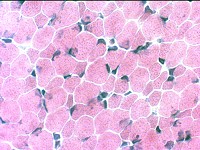 H&E stain |
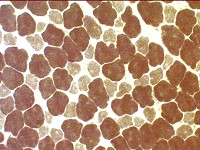 ATPase pH 9.4 stain |
|
|
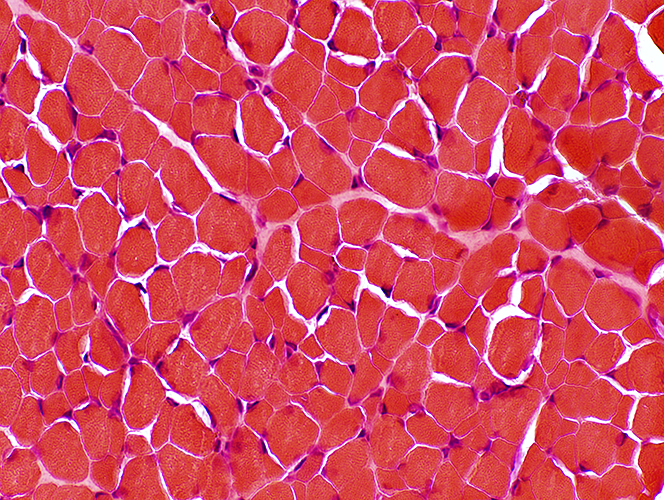 ATPase H&E stain Fiber size: Bi-modal variation |
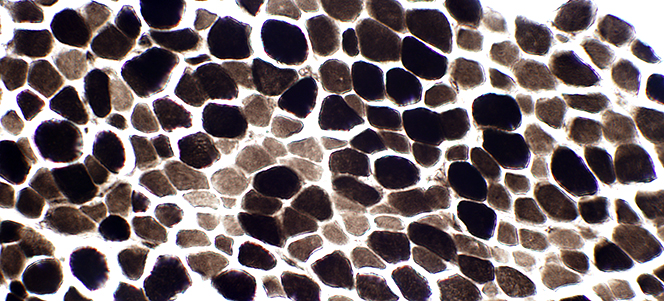 ATPase pH 9.4 stain
|
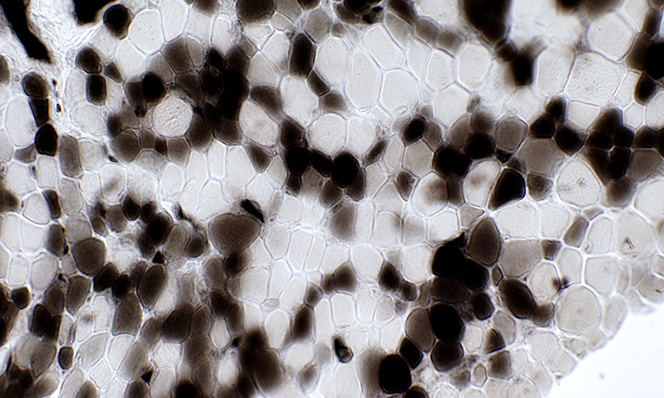 ATPase pH 4.3 stain
|
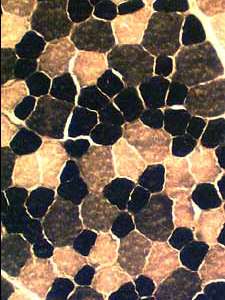
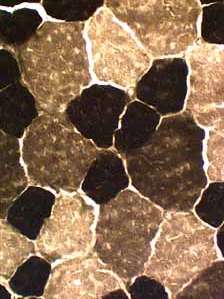 ATPase pH 4.6 stain
|
CHILD (12 years)
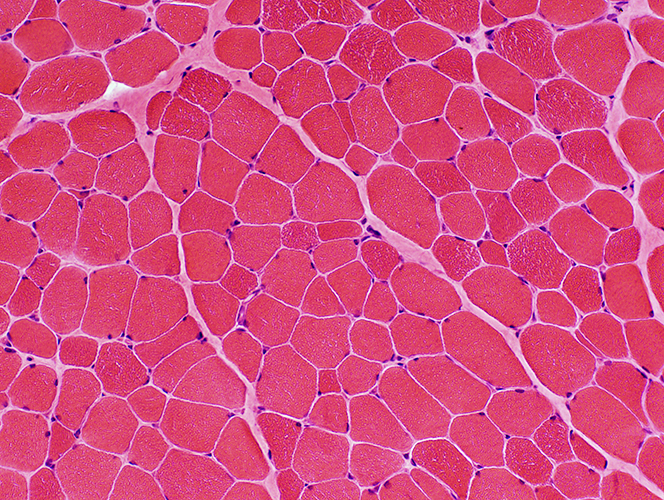 ATPase H&E stain Fiber size: Bi-modal variation |
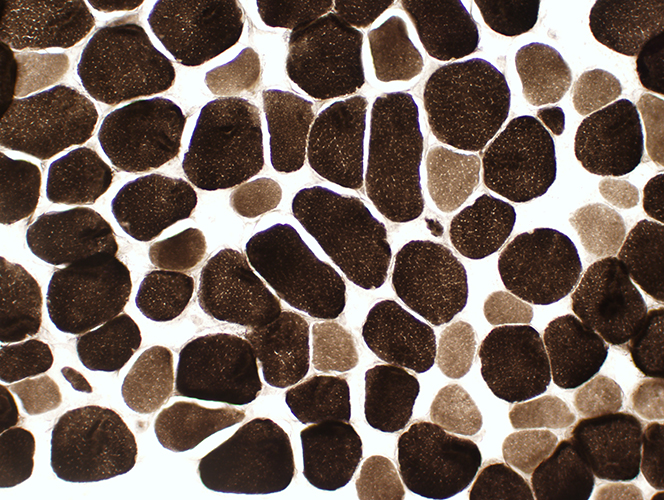 ATPase pH 9.4 stain
|
 ATPase pH 4.3 stain
|
Co-Expression of Fast & Slow Myosin in Same Larger Muscle Fibers
Small Muscle fibers: Stain only for Slow Myosin (Type I)
 Fast myosin in muscle fibers |
 Slow myosin in muscle fibers |
Fiber Predominance: Type 2
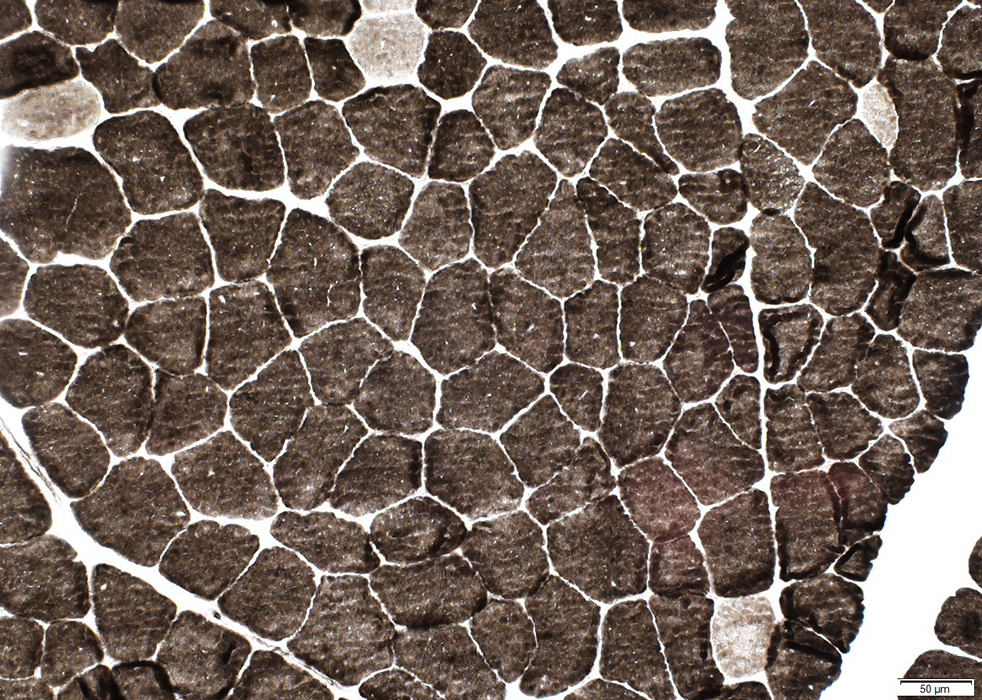 ATPase pH 9.4 stain |
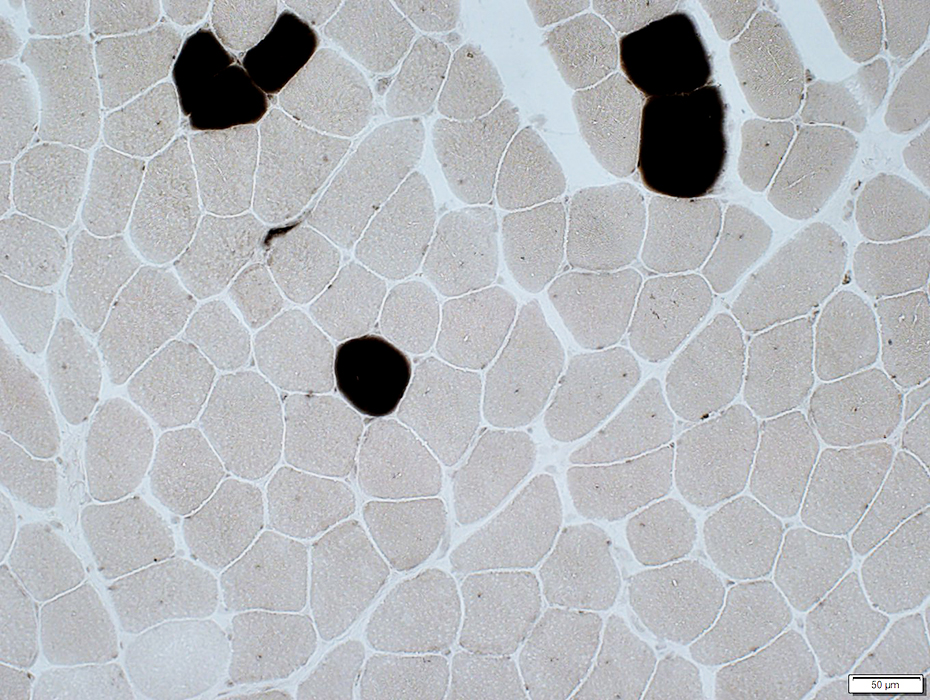 ATPase pH 4.3 stain |
See
Fiber type disorders
Fiber type properties
Return to Neuromuscular Home Page
Return to Congenital weakness
10/1/2022